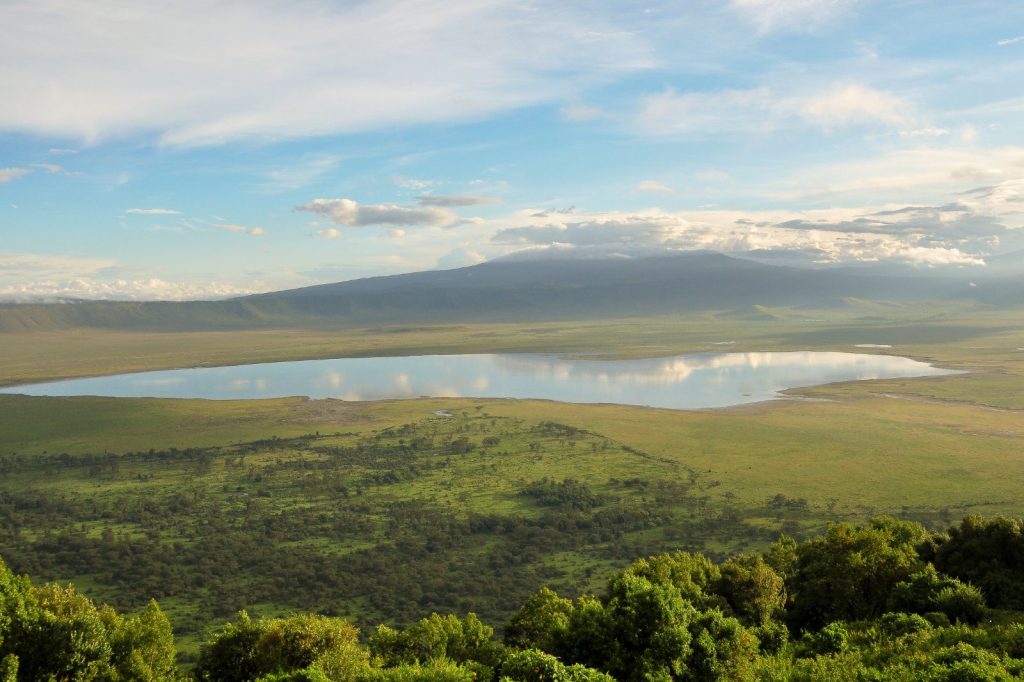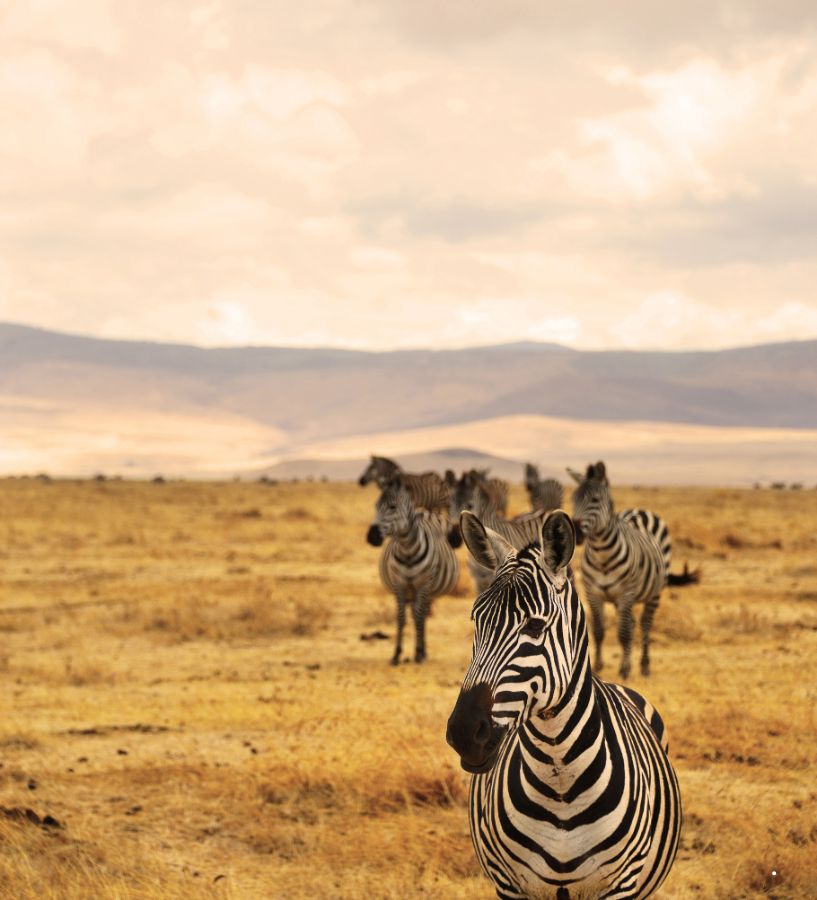Welcome to the Ngorongoro Conservation Area, a place where stunning landscapes, rich wildlife, and ancient human history converge in harmony. Located in northern Tanzania and adjacent to the Serengeti, this UNESCO World Heritage Site spans over 8,000 square kilometers of volcanic highlands, grassy plains, forests, and lakes. At the heart of it lies the world-renowned Ngorongoro Crater—the largest intact, unfilled volcanic caldera on Earth.
Ngorongoro is not just a safari destination; it’s a journey through time and nature. It’s where you can witness Africa’s iconic wildlife in an extraordinary setting while standing at the birthplace of humankind.

Formed over two million years ago from a collapsed volcano, the Ngorongoro Crater spans 19 kilometers (12 miles) in diameter and is 600 meters (1,968 feet) deep. It’s often called the “Eighth Wonder of the World” for good reason—it shelters over 25,000 large animals in a self-contained ecosystem, including:
Because the animals are relatively confined to the crater, game viewing is incredibly reliable and rewarding year-round.
While the Crater is the main draw, the greater Ngorongoro area offers diverse attractions:
This region also plays a crucial role in preserving the culture and traditions of the Maasai people, who live and graze their livestock within the conservation area.
Ngorongoro is a year-round safari destination thanks to its mild highland climate and resident wildlife. Each season offers a unique experience:
June to October (Dry Season): Clear skies and excellent wildlife viewing
November to March (Green Season): Lush landscapes, migratory birds, and calving season at Ndutu
April to May: Fewer crowds and beautiful green vistas—ideal for photographers

Bearfoot Expeditions offers unforgettable experiences in and around the Ngorongoro Conservation Area:
Crater Game Drives: Explore the crater floor in custom safari vehicles, guided by wildlife experts.
Walking Safaris: Hike along the crater rim, Empakaai, or Olmoti for a closer connection with nature.
Cultural Tours: Visit Maasai villages and bomas to learn about their customs, dances, and traditional life.
Paleo Tours: Discover the roots of humanity at Olduvai Gorge with guided explorations of the museum and excavation sites.
At Bearfoot Expeditions, we believe that visiting Ngorongoro is more than just a game drive—it’s an exploration of nature’s wonders and human legacy. Whether you’re seeking a luxurious crater lodge, cultural immersion, or a walking adventure, we’ll design the perfect journey for you.
Let us guide you into one of Africa’s most profound and awe-inspiring places.

Design your safari with Bearfoot Expeditions and experience a world where wildlife, landscapes, and ancient history come alive.
Sign up to receive updates about Women for Forum for African Women Educationalists,
campaigns, and ways to get involved. It’s free to join.
You can unsubscribe at any time, please read our privacy policy for more information
